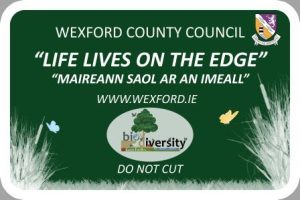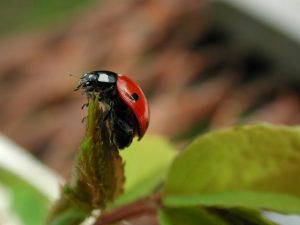 In general Ireland’s local authorities seem to see roadside verges and hedgerows as areas to be trimmed and tamed.
In general Ireland’s local authorities seem to see roadside verges and hedgerows as areas to be trimmed and tamed.
You see evidence of verge cutting and the decimation of hedgerows everywhere as you drive around the country. Neatly side-stepping the law in the name of health and safety, local authorities relentlessly slash hedges, ripping them apart with heavy machinery, they crop verges into oblivion, and legions of strimmer-wielding men in high-visibility vests make sure there’s not a wildflower in sight.
Overzealous neatness is the order of the day along many of Ireland’s highways and byways; neatness that sounds a death-knell for wildlife and biodiversity during the crucial breeding period from spring through the summer.
But it wasn’t always that way. Not so long ago Irish roadside verges in summer were a riot of glorious colour, replete with wildflowers and humming with the buzz of pollinating insects. Native hedgerows dripped with blossom and wild fruits and birds, bees butterflies and mammals all thrived in these thin slivers of Irish wilderness.
Thankfully at least one local authority is taking a pro-active step to end this frustrating destruction of precious wildlife habitat. An enlightened new scheme from Wexford County Council called “Life Lives on the Edge” is looking to re-wild sections of the county’s roadside verges.
The overall aim of the project is to enhance or rediscover the range of visible biodiversity that potentially exists along our Wexford roads. The concept of this ambitious project originated from the Roads Strategic Policy Committee and has gained involvement and support from the Roads and Planning Departments of Wexford County Council.
The project focuses on managing roadside verges in a wildlife friendly way along four stretches of national road originally, boosting biodiversity without neglecting the authorities safety or infrastructural responsibilities. As part of the project the council trim the verges in February / March, then leave them alone until September. Between those times nature is left to her own devices, allowing wildflowers and associated fauna to thrive.
These pilot areas are situated on National Roads around Tagoat, Crossabeg, Scarawalsh and Barntown, and vary in length. Their boundaries will be defined by signposts (like the one above) at either end of the vegetated strips. If the pilot is successful the local authority hopes to roll the scheme out to wider areas of the county over the coming years.
If the scheme is successful let’s hope that the “Model County” can live up to its name, and serve as a model that other local authorities around the country will emulate, breathing life back into Ireland’s roadsides.










2 comments
John Foss
I couldn’t agree more. A few weeks ago I was admiring a mass of early purple orchids in the hedgerows at Ballinaglera Co. Leitrim. I returned the next day armed with my camera to capture this fabulous display for my website only to find that in the meantime, someone had been along and strimmed the whole lot down!! Perhaps some folk think that it is only the grass they are strimming but these early purple orchids were unmistakingy beautiful. Surely the person could see that this wasn’t right??? We have also had reason to call Leitrim County Council recently when workmen on the road tipped a arge amount of waste tar into the hedgerow killing everthing!!! Have to say though, after the phonecall they promptly returned, dug out the tar and put topsoil back into the hedgerow. But come on.
Floss Gibson
Great article Calvin. About time we see a county council waking up to the facts, they will be enhancing the beauty of the area, helping wildlife to hang on and saving themselves money all at the same time. Only one thing – the “DO NOT CUT” wording on the signs needs to be waaaay BIGGER!